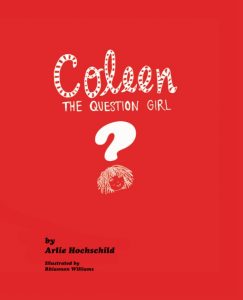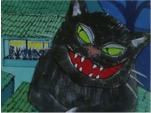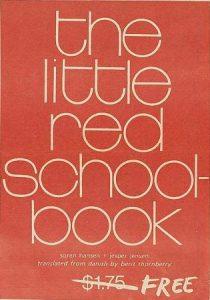 This blog post looks at one of the best-known anti-sexist picturebooks produced in France: Histoire de Julie qui avait une ombre de garçon, written by Christian Bruel and Anne Galland, with illustrations by Anne Bozellec (1976). Produced in the aftermath of the protest movements of ’68 and the rise of second wave feminism, Julie is a fearlessly dark exploration of the emotional fallout experienced by a little girl when her parents cannot accept her for who she is. Continue reading
This blog post looks at one of the best-known anti-sexist picturebooks produced in France: Histoire de Julie qui avait une ombre de garçon, written by Christian Bruel and Anne Galland, with illustrations by Anne Bozellec (1976). Produced in the aftermath of the protest movements of ’68 and the rise of second wave feminism, Julie is a fearlessly dark exploration of the emotional fallout experienced by a little girl when her parents cannot accept her for who she is. Continue reading
Kim Dhillon, We tell ourselves stories in order to live

Kim Dhillon, We Tell Ourselves Stories in Order to Live, 2016, Commissioned by CCA, Glasgow. Courtesy of the artist.
Our project partner, Kim Dhillon from Invisible Spaces of Parenthood, has just opened a new installation in Glasgow’s Centre for Contemporary Arts. ‘We Tell Ourselves Stories in Order to Live’ explores 1970s non-sexist, multi-racial children’s books published by feminist collectives, as part of the CCA’s new exhibition Forms of Action. You can read more about some of the books and collectives featured in the exhibition in Dhillon’s blog post for us here.
Dr Elsa Richardson will be running reading group sessions at the Women’s Library in Glasgow in which visitors will read and discuss together the children’s books from the exhibition. Themes explored include: representations of genders, lesbian parents, models of care, and radical and taboo subjects for children’s books.
1968 and Children’s Illustration
A guest post by artists Sarah Blair and Bill Prosser
 In her Radical Children’s Literature Kimberley Reynolds (2007) describes the vital seam connecting children’s book design and modernist creative experiment from the 1920s onwards. She quotes Esther Averill writing on French avant-garde illustration in 1930 (p.30):
In her Radical Children’s Literature Kimberley Reynolds (2007) describes the vital seam connecting children’s book design and modernist creative experiment from the 1920s onwards. She quotes Esther Averill writing on French avant-garde illustration in 1930 (p.30):
The avant-garde harps on the theme of the child. It has created a kind of religion for his sensibilities and imaginative powers, in which it reads its own better moods. It believes that the dreamlike state of mind in which it specialises and which it interprets with primitive graphic signs, is part and parcel of the child’s daily routine. In creating for the child it has trusted in his being all prehistoric art plasma, and nothing of a bloodthirsty young savage. Continue reading
Coleen the Question Girl
By Kim Dhillon
 In the early 1970s, three independent feminist collectives were organized in the US with the purpose of writing, illustrating, publishing, and distributing non-sexist children’s books. Dissatisfied with the children’s literature on offer, and mobilized by the consciousness-raising of the Women’s Liberation Movement, these do-it-yourself styled collectives of feminist mothers wanted to broaden the range of children’s books to reflect the world they wanted their children to grow up in. Continue reading
In the early 1970s, three independent feminist collectives were organized in the US with the purpose of writing, illustrating, publishing, and distributing non-sexist children’s books. Dissatisfied with the children’s literature on offer, and mobilized by the consciousness-raising of the Women’s Liberation Movement, these do-it-yourself styled collectives of feminist mothers wanted to broaden the range of children’s books to reflect the world they wanted their children to grow up in. Continue reading
Cirkeline on Holiday (1971): the politicization of television for preschoolers in Scandinavia
 In mid-January 1971, the national public service broadcaster in Denmark aired an animation film aimed at three to six year-olds called Cirkeline on Holiday.
In mid-January 1971, the national public service broadcaster in Denmark aired an animation film aimed at three to six year-olds called Cirkeline on Holiday.
Joe 90: futuristic 9 year-old action hero of 1968
By Jonathan Bignell
 The British television series Joe 90 (1968) was one of several children’s programmes in the 1960s that used puppets and numerous special effects in action-adventure storylines set about 30 years in the future (Bignell 2011).
The British television series Joe 90 (1968) was one of several children’s programmes in the 1960s that used puppets and numerous special effects in action-adventure storylines set about 30 years in the future (Bignell 2011).
The Little Red Schoolbook (1969)
 By Sophie Heywood
By Sophie Heywood
This first blog post for our new research network offers a brief introduction to one of the most notorious examples of children’s rights activism from the period: Bo Dan Andersen, Jesper Jansen and Søren Hansen’s Den lille røde bog for skoleelever (The little red schoolbook) from 1969.
Continue reading
